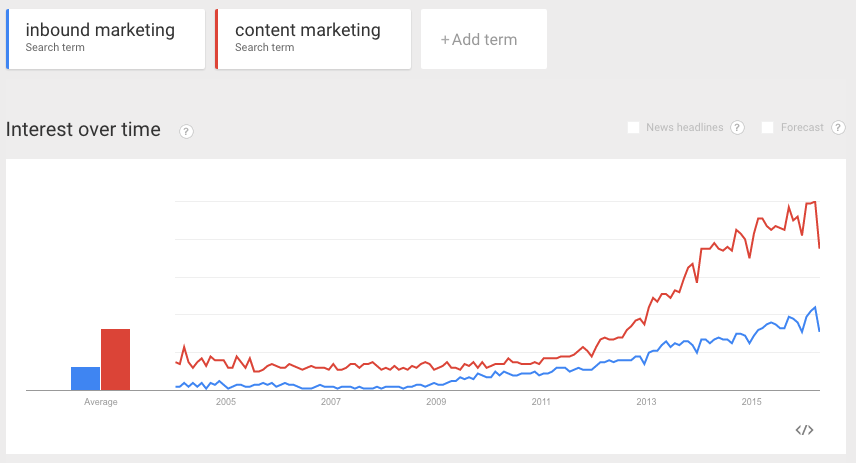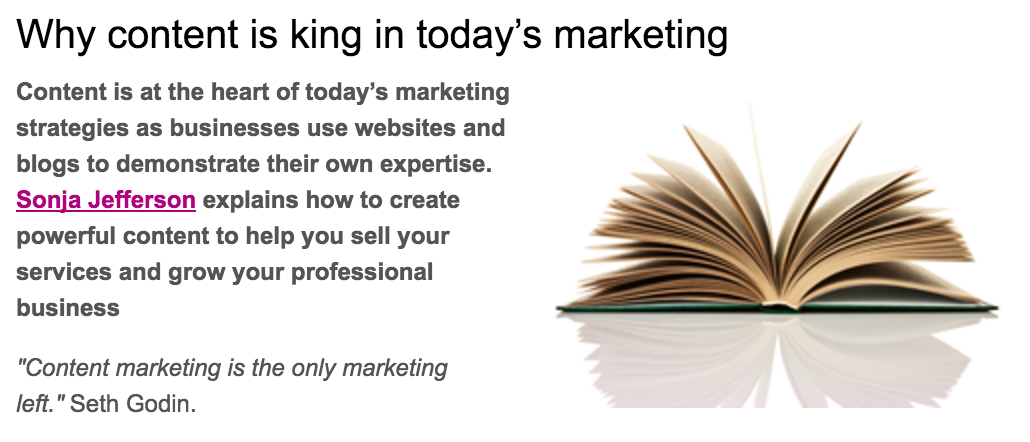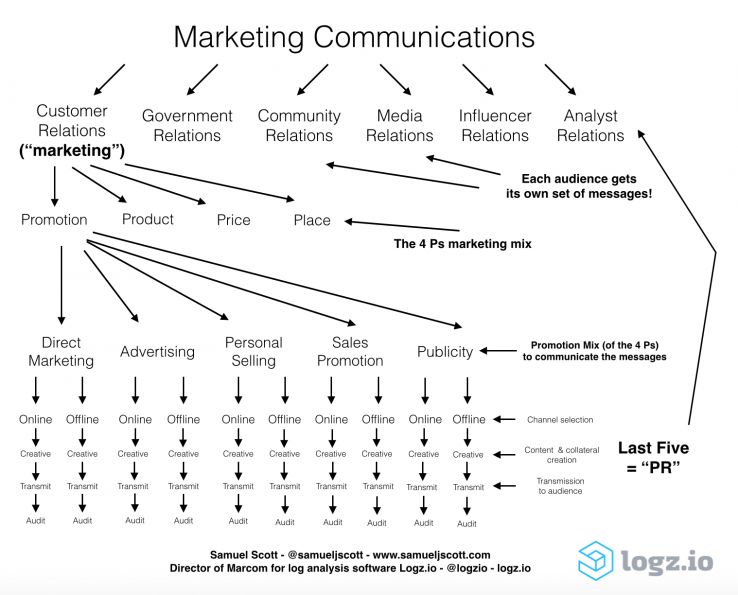The biggest problem in marketing in the tech world today is that too many marketers do not know the first thing about marketing.
Digital marketers — who, as marketers, really should be cynical enough to know better — have fallen into an echo chamber of meaningless buzzwords.
First, the phrase “inbound marketing” was invented and popularized in the mid-2000s by HubSpot, a company that sells — of course — “inbound marketing software” and is receiving some bad publicity in the form of a book by former employee Dan Lyons that was released on April 5.

As Lyons alleges and seems to imply, the company’s initial success seems to have been based on the promotion of the created term rather than its actual product:
HubSpot’s first hires included a head of sales and a head of marketing. Halligan and Dharmesh filled these positions even though they had no product to sell and didn’t even know what product they were going to make. HubSpot started out as a sales operation in search of a product.
Second, the phrase “content marketing” was largely established around the same time by Joe Pulizzi. He created the Content Marketing Institute, which sells — of course — “content marketing training,” as well as tickets to the Content Marketing World conference. And what is “content marketing?” Wikipedia’s definition (as of this moment of writing) is a textbook example of saying something without actually saying anything:
Content marketing is any marketing that involves the creation and sharing of media and publishing content in order to acquire and retain customers.
The use of these and other buzzwords has caused a new generation of marketers to enter the field without knowing even the basic terms and practices that underpin our industry. The result is that too many tech marketers are basing their work on faulty premises, hurting our profession and flooding the Internet with spammy “content.” To understand where the marketing world went wrong, let’s first compare how marketing departments operated before and after the mass adoption of the Internet.

Google Trends
Imagine that it is the year 1996. What did traditional marketing departments think about? The four Ps. The promotion mix. Communications strategies. SWOT analyses. The five forces. Building brands. Then, by 2006, what did digital marketing teams think about? High Google rankings and more website traffic. Getting Facebook “likes” and Twitter followers. Keyword density. Building links.
“Marketing departments” were using professional strategies that had been developed over many decades. “Online marketing departments” were calling themselves “marketers,” but did not even know what every 18-year-old marketing student in business school knows. Two very different teams were doing two very different things.
Online marketers should have … started to practice real marketing and brand building.
In the following years, however, online marketing changed. Google got better at stopping artificial attempts to manipulate rankings. Brands started to have to pay to have any Facebook reach. Most links to startups’ websites had always come simply as natural by-products of news coverage and publicity efforts and not SEO-type link building, as a March 2016 study by Credo founder John Doherty published on Moz found.
“Content marketing” is nothing new
While all of these changes were occurring, online marketers should have discarded their imitation marketing and started to practice real marketing and brand building.
But “inbound marketers” had always been wrongly declaring — without any proof or evidence — that “outbound” strategies such as advertising, PR and publicity were “dead.” (See Gartner’s Martin Kihn’s refutation of such boneheaded claims.) So, they still needed to differentiate themselves somehow to remain relevant and keep their staff salaries, client retainers and software users.
The digital marketing world instead responded by coining new buzzwords for existing practices to make it seem as though they were doing something new and different. “Content marketing” arrived shortly after online marketers began to utter the single stupidest phrase that has ever existed in the entire history of marketing:
“Content is king!”
Anyone who needed to be convinced of the truth of that statement has no business working in the marketing industry.

The content has always been the most important part. It’s a pandering beer commercial that is shown on TV during the Super Bowl. It’s a shocking video of a publicity stunt that spreads throughout Facebook. It’s a duckface selfie photo that a narcissistic millennial posts on Instagram. It’s a contributed article to a major news outlet (such as this piece, which will probably be ignored in the marketing community because attention-hungry marketers must always claim that some “paradigm has shifted” to build a name for themselves even though nothing significant ever really changes).
If the beer commercial falls flat, then nothing else matters. If the publicity stunt does not attract the public’s attention, then nothing else matters. If the duckface selfie fails to receive enough “likes” — well, that would actually never matter in the first place.
Marketing has always been the creation of a message, the insertion of that message into a piece of content and the transmission of that content over a channel to an audience in an effort to build brands, increase demand and move people down sales funnels. The same is true today — the only differences are that we have two additional sets of available channels, called the Internet and mobile devices, and those channels allow for a greater variety of content formats.
In the 1950s, a marketer may have created a message about a product and then put that message into a print advertisement that was then transmitted through a newspaper. Today, a marketer may create a message about a product and put that message into a video that would then be transmitted through YouTube.
The tools and channels change, but the process remains the same. “Content marketers” are doing nothing different from what creative teams have always done. In the SEO community specifically, more marketing software tools and digital marketing agencies are beginning to understand the negative effect of buzzwords as they rebrand themselves away from “SEO” and more toward “marketing.”
In the end, all marketing is “content marketing” because all marketing uses content. Most people who use the generic word “content” are unsure of what they are precisely doing. If it is an advertisement, say so. If it is sales collateral for a direct marketing campaign, say so. If it’s a publicity video, say so. Defining a creative precisely will help you to know the best practices for that specific type of collateral.
Creativity cannot be scaled.
If marketers do not change their mindsets, they will continue to treat “content” as the “widgets” of business school and spam the Internet with crap as they try to publish more and more “content” at a cheaper and cheaper cost. But “content” is not a commodity. Creativity cannot be scaled. As Greg Satell wrote in the Harvard Business Review:
We never call anything that’s good “content.” Nobody walks out of a movie they loved and says, “Wow! What great content!” Nobody listens to “content” on their way to work in the morning. Do you think anybody ever called Ernest Hemingway a “content creator”? If they did, I bet he would punch ‘em in the nose.
If, for example, what you are really making is an advertisement, then do not call it “content” — be proud that you are making a commercial for your company or client and then make it awesome enough so that people will remember you years later.
The myth of “inbound marketing”
The overall marketing process I described above occurs within one or more of the five frameworks within the promotion mix: direct marketing, advertising, personal selling, sales promotion and publicity. (The promotion mix is under one of the four Ps of the marketing mix: product, price, place and promotion.)

My essay on Moz
I explained the four Ps, the promotion mix and the step-by-step approach to marcom strategy elsewhere, so I will summarize here:
- Direct marketing is the sending of sales collateral to a list of specific people with the goal of eliciting a direct, immediate response. It includes direct mail, email and most advertising over the Internet, mobile and social media channels. (Yes, most online and mobile advertising, as Ad Contrarian Bob Hoffman has noted, is actually direct marketing and not advertising.)
- Advertising is the use of paid placements in mass media outlets and channels to increase brand awareness and create brand associations among a mass audience.
- Personal selling is the use of salespeople and is often the chosen strategy when companies are selling expensive B2C products or B2B products with long sales cycles.
- Sales promotion is the use of short-term incentives to encourage the purchase or sale of a product or service through discounts and coupons.
- Publicity is increasing the public visibility or awareness through (owned or earned) media.
I have not listed “inbound marketing” or “content marketing” or “social media marketing” because those things are not parts of the promotion mix and do not actually exist in the first place. Any example of those three things is simply a function of an existing element of the promotion mix by another name:
- The Dollar Shave Club’s hilarious first video was not “content marketing” — it was advertising (transmitted over the channel of YouTube)
- Red Bull’s space jump was not “content marketing” — it was a publicity stunt (transmitted over various social media networks and the news)
- Oreo’s famous Super Bowl tweet was not “social media marketing” — it was a publicity stunt (transmitted over the channel of Twitter)
Such examples, by the way, are almost always from mass-consumer brands. It’s extremely rare to see high-tech startups doing anything similar because of the nature of the industry.
The dominance of direct marketing
One of the largest online marketing publications, Marketing Land, focuses almost exclusively on direct marketing (by various names):

A word of advice to the publisher: I would include coverage of the advertising, publicity and sales worlds so that you will attract additional marketers and salespeople who are interested in other parts of the promotion mix. (Disclosure: I have spoken at conferences of Search Marketing Expo — a sister company to Marketing Land — in Silicon Valley and Europe.)
The tech startup world loves direct marketing. Why? Startups live or die based on precise analytics and growth rates, and direct marketing platforms easily provide these metrics. Google’s recent announcement of its Analytics 360 Suite is merely the latest attempt to cater to this demand for this information.
Whether one’s desired direct marketing channel is email or Google AdWords or Facebook, all of those platforms come with precise data that can measure opens, “likes,” clicks and shares, as well as any resulting purchases, conversions or downloads. A/B and multivariate tests can be run to squeeze out every possible increase in conversion rates.
Moreover, marketing automation platforms are simply ways to run all direct marketing campaigns specifically and efficiently from a single place — they are not “all-in-one marketing software platforms” because they cannot help with other types of marketing such as advertising and publicity campaigns. No automated system or algorithm is creative in a way that will amaze human beings.
To become better marketers, those in the tech startup world need to … read a Marketing 101 textbook.
Still, the startup tech world has no patience for the time it takes to build strong brands, which is what advertising — and publicity, to a lesser extent — has always done. Marketers need direct responses in the form of trackable sales, leads, downloads and installations as quickly as possible to satisfy impatient investors and potential acquirers.
The direct ROI of advertising and publicity campaigns are extremely difficult to measure with any degree of precision and do not typically deliver immediate returns. The tech world increasingly demands direct marketing metrics for all marketing and PR work, but it’s difficult to determine direct and immediate ROI from brand marketing campaigns.
One example is when people want direct marketing metrics, such as “How many customers did we get?” from publicity work such as getting news coverage or contributing articles to publications. The number of customers that come from an article’s referral traffic will usually be low. Direct marketing and publicity are two different things that are used for different purposes for different goals, and some of the goals of such articles are to increase brand awareness and thought leadership (and those cannot be measured). Assigning the wrong goals to the wrong functions is one mistake that occurs when online marketers do not know the foundations of traditional marketing.
The positive side of direct marketing is that it is easy to track results. The negative side is that it is boring to create and invasive to receive. People tolerate offline advertising; people hate online advertising. Why? Most online advertising is actually direct marketing — and people hate direct marketing whether it is junk mail in their mailboxes, junk email in their inboxes or junk ads that target them on social media or follow them around the Internet.
Moreover, for advertisers themselves, online advertising — as I wrote in a prior TechCrunch column and discuss as a marketing speaker at various conferences — is a hotbed of fraud, corruption, privacy invasions and kickbacks that is sleazier than Don Draper at his worst.
How tech marketers should respond
Get back to the marketing basics. Over the past decade or so, many digital marketers entered the field from the technical world and, therefore, lacked any traditional marketing education. That’s why they focus on algorithms, discuss how to automate best practices and invent random new terms rather than think about how to build brands with the techniques that have been developed over the past century.
To become better marketers, those in the tech startup world need to skip the latest redundant blog post on “inbound marketing” or “content marketing” and read a Marketing 101 textbook. (I recommend Principles of Marketing by Philip T. Kotler and Gary Armstrong. Tip: Buy a used edition that is a couple of years old to save a lot of money.)
Learn about direct marketing strategy, advertising strategy and publicity strategy within the promotion mix and then apply those traditional principles to your online and offline channels of choice — whether they will include television, Facebook, news outlets, Google AdWords or anything else. Essentially, it is completely changing one’s “marketing algorithm” to integrate traditional and online marketing best practices.
Do not separate traditional and online marketing teams. The more that human activity moves online, the more that traditional and digital marketing will become just “marketing.” Direct marketers will need to know how to apply the best practices in their work to both online and offline channels. The same will be true for advertisers, publicists and salespeople. A good publicist, for example, should know how to get a product on national TV as well as spread on Facebook.
Explore alternatives to direct marketing. Technical people are very good at marketing analytics and algorithms, but they are not always very creative. However, advertisements such as the Dollar Shave Club one mentioned earlier and publicity campaigns such as Israeli PR agency Blonde 2.0’s work for the Yo mobile app can deliver huge results.
We in the tech world have thought like direct marketers for so long that we have forgotten how to act like brand marketers. But remember: How did Apple become the most valuable brand in the world? Through television commercials such as “1984” and print ads such as “Think different.”
Remain skeptical at all times. Marketers should be the most difficult people to whom to market, but even we can be bamboozled. Ask yourself: “How much money will this person or company make by popularizing this idea?” Whenever marketers claim that “everything has changed” or that something is “dead” or that some new buzzword “is the future of marketing,” ask for evidence. Make them cite their sources and explain their reasoning.
Most of the time, they are just full of it.
